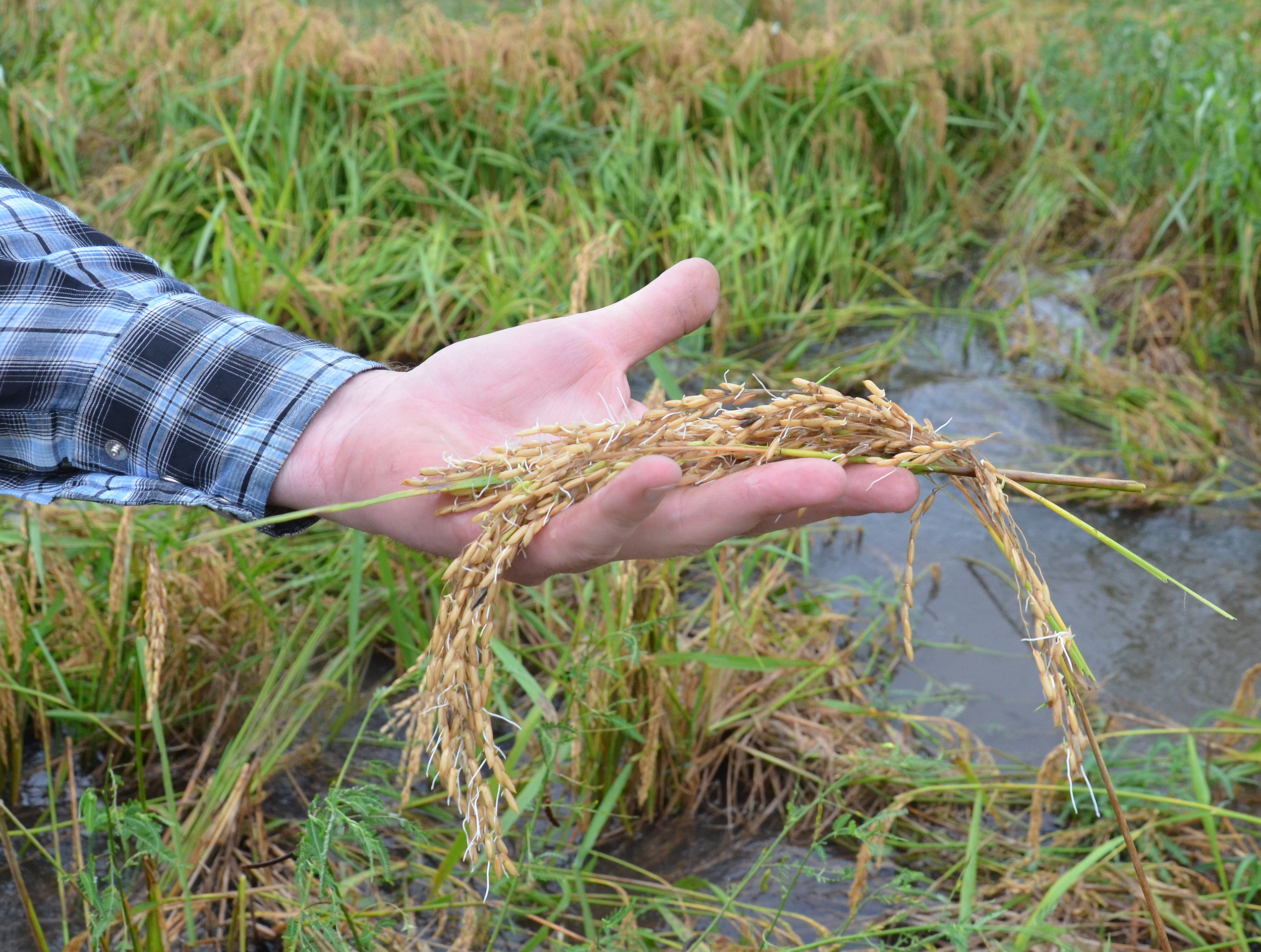AgFax Rice - Hurricane Harvey's Damage
By AgFax Media LLC, AgFax.com
OVERVIEW
Handful of sprouted rice. Photo by Bruce Schultz/LSU AgCenter
Hurricane Harvey has clearly taken a toll on the 2017 rice crop.
In Texas and southeast Louisiana, the storm flooded the small percentage of main-crop rice still in the field. How much of that rice will finally be cut remains to be seen. It will at least sustain yield and quality reductions, and some of that remaining rice may never see a combine.
In the Midsouth, a wide portion of the Arkansas crop went down. Most of that lodging was due to heavy rainfall. Rice also lodged to varying degrees in Mississippi and northeast Louisiana. Some yield will be lost and quality issues could arise where rice went down. At the least, this has now turned into a difficult crop to harvest.
The coastal ratoon crop wasn't heading yet, so it's safe from the standpoint of wind damage and lodging. However, parts of the countryside will be inundated for days, and rivers in southeastern Texas have yet to crest. Prolonged flooding could at least hold back plant development in second-crop fields.
LOUISIANA CROP REPORTS
Dustin Harrell, Louisiana Rice Extension Specialist, LSU Rice Research Station, Crowley
"Most of our rice parishes have been affected to some degree by Harvey. At least in southwest Louisiana, most of our main crop already had been harvested, with a little over 10,000 acres still in the field. With a lot of that remaining rice, we're seeing obvious sprouting in the heads after all the rain over the last several days. I've seen some lodging, too.
"But the main concern now (8/31) is the status of the ratoon crop, with a significant part of that under water. A lot of people already had put money into the second crop – they'd managed the stubble and applied fertilizer. So, we could see some economic loss there, depending on how long the water stays and how well the ratoon stubble makes it through flooded conditions.
"Where first-crop rice hasn't been cut, it's hard to say how much of it lodged. But by the time the water goes down and people can cut the last of the main crop, it may be too far gone to matter."
Johnny Saichuk, Consulting Agronomist, Ducks Unlimited, South Louisiana
"Compared to what happened in Texas, we dodged a large bullet in this part of the state. The first crop in south Louisiana was mostly harvested. Whatever was left was primarily rice planted late behind crawfish. Overall, though, 99% of the crop down here had been cut and the second crop had not headed yet.
"Since last Friday, we've had 8.25 inches of rain here, although several people report bigger totals than that. Overall, it's rained 6 to 12 inches in this part of southwest Louisiana. Yields started out okay but then fell off due to the effects of earlier rain and cloudy weather when plants really needed sunshine. Quality, though, was good, probably the consequence of slower ripening. Growers noticed better cup weight, which is something they never mention."

